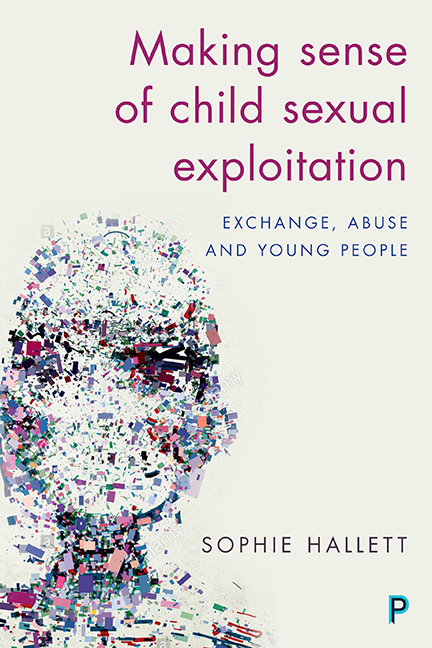Book contents
- Frontmatter
- Dedicaton
- Epigraph
- Contents
- Acknowledgements
- Introduction
- one From ‘child prostitution’ to ‘child sexual exploitation’: an overview
- two Vulnerabilities
- three Risk
- four Exchange and abuse
- five Responses, recognition and reciprocity
- Conclusion: child sexual exploitation – agency, abuse and exchange
- References
- Index
one - From ‘child prostitution’ to ‘child sexual exploitation’: an overview
Published online by Cambridge University Press: 05 April 2022
- Frontmatter
- Dedicaton
- Epigraph
- Contents
- Acknowledgements
- Introduction
- one From ‘child prostitution’ to ‘child sexual exploitation’: an overview
- two Vulnerabilities
- three Risk
- four Exchange and abuse
- five Responses, recognition and reciprocity
- Conclusion: child sexual exploitation – agency, abuse and exchange
- References
- Index
Summary
Children and young people abused through exchanging sex for something is not new. Neither is it new to societal, political or practice awareness. What is new is the current understanding and representation of the phenomena. While the introduction of ‘child sexual exploitation’ has been relatively recent, it is important to note that the issue is directly rooted in ‘child’ or ‘adolescent’ ‘prostitution’, and has been the re-emerging subject of policy, practice and public concern throughout the late 19th and 20th centuries (see Brown, 2004; also Brown and Barrett, 2002). This reconceptualisation has formed a paradigm shift in how we understand the problem and those caught up in it – moving from an issue in which young people were positioned primarily as offenders of criminal or anti-social behaviour, to one where they are now looked on as victims of abuse. Yet this is not simple semantics. This change in terminology signifies a change in the meaning of the phenomena itself. Both terms – prostitution and sexual exploitation – are historically situated and conceptually loaded, creating theoretical boundaries to the ways the problem has been (and is) understood – and, as a consequence, defined in policy and practice directed responses (see Kelly et al, 1995). Children's agency, responsibility, blame, and conceptions of vulnerability are integral to the way this issue has evolved within policy and practice.
How has this change come about? Why was this even necessary – what is it about this issue that saw it excluded from definitions of child abuse, when these were first formed, and why so long for its inclusion? This chapter sets out the historical and contemporary representations of CSE, and the ways in which the terminology and definitions of the problem have changed within policy frameworks, and explores how each has influenced and continues to influence how this issue is defined and responded to. I aim to provide a context for the discussion that follows in later chapters by providing an analysis of the sets of ideas within which CSE has come to ‘exist’, signalling towards problems arising from the current conceptualisation of CSE. I have organised this chapter into four historical phases, providing an overview of relevant literatures relating to child prostitution and child sexual exploitation, situated within their associated policy and legislative contexts.
Information
- Type
- Chapter
- Information
- Making Sense of Child Sexual ExploitationExchange, Abuse and Young People, pp. 11 - 34Publisher: Bristol University PressPrint publication year: 2017
